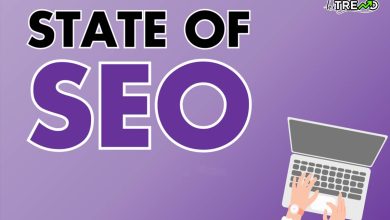Shopify SEO – How To Optimize Your Shopify Site For Google

Shopify has become a leading platform in the ecommerce world, with over a million businesses using it to reach their customers.
Notable brands like Netflix Merch Shop, Gymshark, and Kylie Cosmetics have successfully utilized Shopify to streamline their operations and boost online sales.
This success has made Shopify an attractive option for new sellers looking to move their business online. As a result, Shopify has grown its market share among CMS platforms from 0.3% to 6.5% since 2014.
However, we should take into account that Shopify is an ecommerce-focused CMS. When it comes to online stores, it has a much higher market share and is the biggest in the United States, at 28%, compared to WordPress (with WooCommerce), at only 17%.
You can read more SEO articles
So, how do you set your Shopify site apart from the competition?
Understanding Shopify SEO
Shopify SEO principles are similar to any other ecommerce website’s SEO, with just one difference: You need to use the tools available within the Shopify platform and work within its limitations.
It involves optimizing not just content but also product listings and collections as you would do with any other ecommerce store.
Optimizing your product pages means creating unique, detailed descriptions, optimizing title tags to target specific product searches, implementing product structured data, using high-quality images, and displaying customer reviews for trust-building.
Collection pages should target broader search queries, which involve the use of unique descriptions and title tags to avoid keyword cannibalization. Implementation of carousels structured data and ensuring easy navigation to boost user engagement can improve visibility in search result pages and rankings.
Now, let’s dive in and explore ways you can optimize your product and collection pages in Shopify.
9 Ways To Improve Shopify SEO & Boost Sales
Shopify sellers can take advantage of some built-in SEO-friendly features.
Title tags, URLs, and meta descriptions can all be edited to meet the specific needs of your audience.
But it will take more than that to climb the search engine ranks.
Here are nine ways to maximize your Shopify SEO and secure that #1 position.
1. Optimize Your Store’s Structure
Website architecture is incredibly important to your SEO success.
For ecommerce stores, it is advised to use a website hierarchical structure both for SEO and user experience perspective.
In Shopify, that would be Home Page > Collections > Sub Collections > Product Pages.
However, Shopify’s collection pages don’t support nesting collections, and you can’t create, for example, a ‘black T-Shirt collection with the URL /collections/t-shirt/black/.
Unlike WordPress, all collections in Shopify are at the same level.
Here is an example of how Netflix shop created a visual hierarchy in navigation without using nested URLs for collections.
In order to nest URLs in Shopify you have to use Power Tools Filter Menu app or do it with workarounds by custom coding a liquid templates which is quite challenging.
This is where WooCommerce has a big advantage over Shopify: You have 100% flexibility over your store URL structure.
2. Optimize Shopify Collections Pages
Once you have built your collections, it is time to organize them. Collections pages are crucial for enhancing both user experience and SEO. They help customers browse related products, making it easier for them to find what they’re looking for.
Below is a video on how to display sub-collections on the collection page in Shopify.
But I would like to note that this doesn’t create URLs in hierarchical order; it only builds collection pages hierarchically visually. When you open ‘/collections/t-shirts/’, it shows two sub-collections with URLs ‘/collections/black/’ and ‘/collections/white/’.
Now, let’s review a few examples of incredibly well-optimized Shopify collection pages.
2.1 Gymshark
In this example, Gymshark was able to implement a hierarchical URL structure for collection pages “https://row.gymshark.com/collections/t-shirts-tops/womens” and filters on the right to improve user navigation and user experience.
Also, notice how it has included short, unique descriptions at the top of the collection page, which may help them rank with long-tail search queries related to the product.
2.2 Mack Weldon
Accessible and easy-to-use filters on the left with a clear, minimalist design make the shopping experience incredibly user-friendly and efficient. When you search for “t-shirts,” they rank on the first page in organic search results in the USA.
However, when you perform product searches, Google shows a huge grid of popular products at the top of traditional search result pages. This pushes standard results further down and decreases the chances of someone clicking on your webpage.
Thus, it is highly important to integrate your Shopify shop with Google Merchant Center to appear in Google Shopping as well as in the popular products grid.
3. Integrate with Merchant Center
Integrating your Shopify store with Google’s Merchant Center is essential to benefit from Google Shopping.
Once you install the Google & YouTube app, you can push your products to the Merchant Center and make them eligible to display in the Google Shopping tab and Organic popular products box of Google Shopping.
You can see how prominent it is and how it pushes traditional search results further down.
Once you have pushed your products to the merchant center you can track your performance in the Merchant report of Google Search Console.
Follow HiTrend on X





